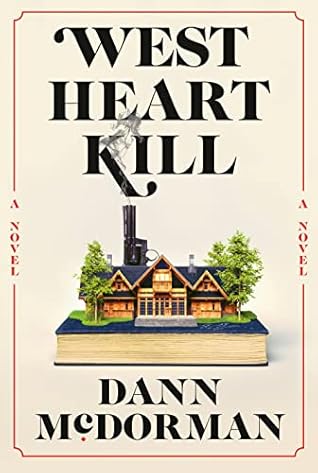More on this book
Community
Kindle Notes & Highlights
The crows have scratched their feet at the corners of his eyes, lines not from smiling but from skepticism, the habitual grimace or squint of a man weary of betrayal.
In The Riverside Villas Murder by Kingsley Amis, the dust jacket challenges readers to “pit their wits against the author’s and solve the mystery for themselves” with a careful “study [of ] pages 61, 82 and 160.”
John Dickson Carr, whose novels almost exclusively centered on this device. In 1935’s The Hollow Man (published in the United States as The Three Coffins), Carr devoted an entire chapter to the famous “Locked Room Lecture,” in which his sleuth, Dr. Gideon Fell, outlines seven possible categories of solutions, each with endless variations.
“The Garden of Forking Paths”—Jorge Luis Borges published in English for the very first time.
The most poetic murder in the detective canon may come courtesy of Dorothy Sayers, who discovered an ingenious way to kill using nothing but the tolling of the bells, bells, bells…
The OED also contains an entry for the delightfully morbid “murder of crows” (“morther of crowys,” circa 1475), which was purportedly inspired by the propensity of crows to feast on the dead, particularly on battlefields. But, sadly, there is ample evidence that collective phrases like this were merely fanciful inventions concocted for medieval glossaries like The Book of Saint Albans from 1486 and revived, centuries later, by James Lipton in his An Exaltation of Larks from 1968. Logophiles may, of course, exercise poetic license in continuing to indulge in such treats as “a skulk of thieves,”
...more
Patricia Highsmith adapted the Christie disappearance for her novel A Suspension of Mercy, but in her version, the novelist is the dastardly husband, not the vanishing wife.
Chandler famously admitted (or claimed) that he didn’t know who murdered the chauffeur in The Big Sleep.
Paul Auster’s New York Trilogy
Henry James, nearly a century earlier in The Sacred Fount, offers no crime, no solution, and no detective—
Roy Vickers used (real-life) instances of unsolved crimes as the basis for a series of (fictional) stories centered on Scotland Yard’s (invented) Department of Dead Ends—a
Anthony Berkeley’s The Poisoned Chocolates Case (1929) centers on a “Crimes Circle” club of armchair detectives who tackle a baffling mystery—Who sent the poisoned chocolates to Sir Eustace?
I must acknowledge my particular debt to Julian Symons’s Bloody Murder and to The Oxford Companion to Crime & Mystery Writing (Rosemary Herbert, editor). Fans of T. S. Eliot’s The Waste Land (1922) will recognize Thursday’s epigraph; Friday’s epigraph is from John Dickson Carr’s The Hollow Man (1935); Saturday’s is G. K. Chesterton’s “How to Write a Detective Story” (1925); Sunday’s is Thomas De Quincey’s “On Murder Considered as One of the Fine Arts” (1827); and the Confession epigraph quotes Agatha Christie’s “Hercule Poirot—Fiction’s Greatest Detective” (1938).


